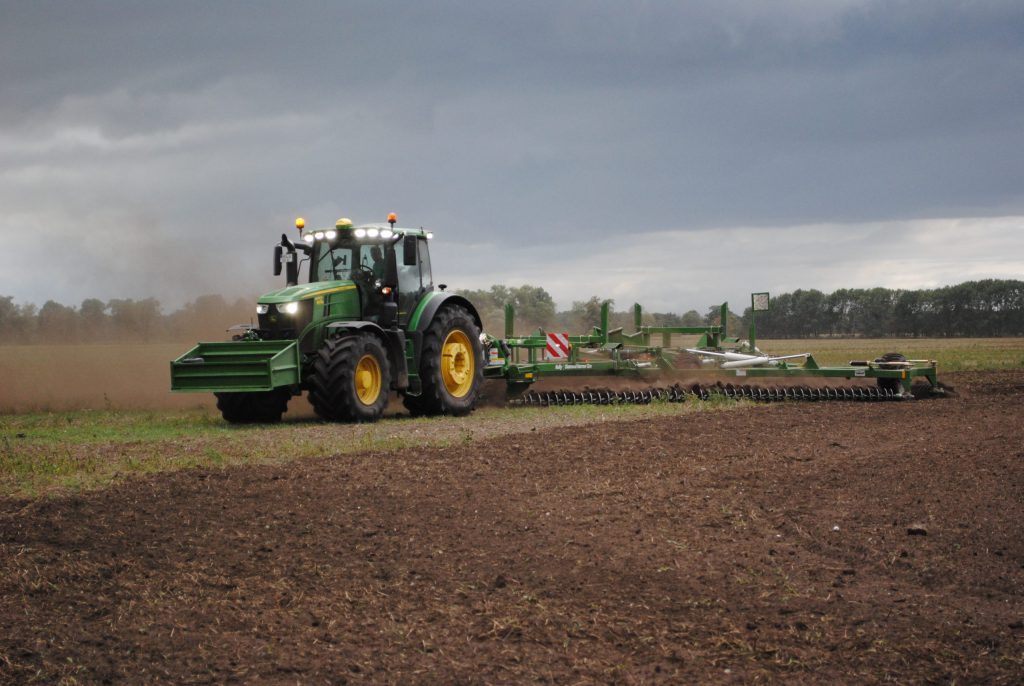Farmers, are you scratching your head over what to do with all that crop residue after harvest? If you’re not evenly distributing your crop residue, you’re missing out on a key ingredient to unlocking your farm’s full potential.
Spreading it uniformly across your soil surface can take your cropping game to the next level.
Spread it like a skilled farmer and prepare for a plentiful crop yield, with Kelly Tillage.
What Is Crop Residue Management
Crop residue management is all about dealing with the leftovers of plants left before and after harvesting, such as leaves, stems, and other debris. You can handle this by leaving it on the soil surface as mulch, putting it into the soil with tillage, or removing it from the field altogether.
Gone are the days when farmers saw crop residue as nothing more than waste, often disposed of by burning it. These days, this practice is strongly discouraged and rarely used by farmers due to its harmful impact on the environment.
Preserve Soil Health With Crop Residue Management
Advantages Of Crop Residue Management
Residue management helps to protect the soil from degradation caused by erosion, while also reducing moisture loss and increasing organic matter content.
Mulching Effect
When crop residue is present on the soil surface, it creates a mulching effect that reduces the impact of raindrops, slows down soil movement, prevents the soil surface from drying out, and hinders the emergence of weeds that are trying to germinate.
Kelly Tillage Model 1204 effectively eliminates weed, all while avoiding any disturbance to the root zone.
Storing Carbon in Soil: The Process of Carbon Sequestration
When crop plants grow, they absorb carbon dioxide from the air and use it to make plant tissue. When these crops die or their parts, such as leaves and stalks, are removed from the field, the carbon stored in those plant tissues is released back into the air.
Leaving crop residues on the soil surface allows the carbon in the plant tissues to be broken down and absorbed into the soil. This absorption process is known as “sequestration” and it helps to lessen the amount of carbon dioxide in the air by keeping it stored in the soil.
Carbondioixed helps crops in photosynthesis and causes plants to release more substances from their roots, known as root exudates.
These exudates contain organic compounds that can nourish and protect the plants, and provide a food source for soil microorganisms. This can lead to improved soil health and fertility, benefiting other organisms in the ecosystem.
Minimum Soil Disruption
When a larger portion of the soil is covered by leftover plant material from previous crops, it leads to reducing tillage which means less disturbance to the soil. When soil is left undisturbed, the natural processes of decomposition and nutrient cycling are allowed to occur more naturally.
The crop residue on the soil surface acts as a food source for soil microbes, which break down the material into organic matter that becomes part of the soil.
This organic matter helps to improve soil structure by increasing the amount of pore space in the soil, which allows for better water and air movement.
Calling All Farmers!
Get full coverage and unmatched shallow tillage for your farmland through 8024 Diamond Harrow.
Moisture Boost
Crop residues create a rough and covered surface, helping to retain soil moisture by preventing water from evaporating too quickly. This results in improved moisture retention in the soil and a reduced risk of drought stress in plants.
Tilling Effect
Soil’s Superfood
By lightly tilling crop residue into the soil, the organic matter present in the residue can be incorporated into the soil, leading to improved soil structure, increased water-holding capacity, and enhanced nutrient availability. These factors are essential for maintaining soil fertility and promoting soil health.
Nutrient Cycling
When crop residue is tilled into the soil, it gradually releases essential nutrients like nitrogen, phosphorus, and potassium to nurture plants over an extended period, minimizing the need for additional fertilizer applications.
Improves Soil Structure
Tilling crop residue into the soil can benefit soil structure as the organic material in the residue helps to hold soil particles together, resulting in more stable soil that is less likely to erode.
Crop Residue Hurdles
Battle Of The Bugs
- Residue can become a host for pests and diseases, leading to a negative impact on the next crop. It can have allelopathic effects on subsequent crops, stopping their growth and development, and resulting in lower yields.
Hinders The Crops Input
- The high crop residues can make it difficult for seeds and plants to penetrate the soil uniformly, leading to uneven growth and lower yields. Moreover, it can create problems for the effective application of fertilizers and pesticides on the soil surface, making it difficult for them to reach their intended targets.
Cool and Wet Seedbed Challenges
- Crop residue on the soil surface can slow down soil warming and drying, causing delayed germination and uneven emergence of plants which can lower crop yields. Effective crop residue management is crucial to ensure soil efficiently warms up and dries out, enabling timely planting and consistent growth of crops.
Nitrogen Immobilization
- When crop residues are left on the soil, they break down with the help of soil microbes. Microbes decomposing crop residues will use up nitrogen for their growth, which reduces the amount of nitrogen available for the growing crop.
As they need nitrogen to grow and survive. This is called nitrogen immobilization or nitrogen tie-up. This can result in a lack of nitrogen for the crop, reducing its yield and quality.
Take Away
Managing crop residue effectively is essential to ensure soil health, minimize soil erosion, and maximize crop productivity. With strategic planning and proper implementation of the above-mentioned tips, farmers can cultivate thriving soils, boost crop yields, and pave the way for a sustainable future in agriculture.
Effortlessly incorporate crop residue into your soil while minimizing soil disturbance with Kelly Tillage Products, designed for light tillage.


